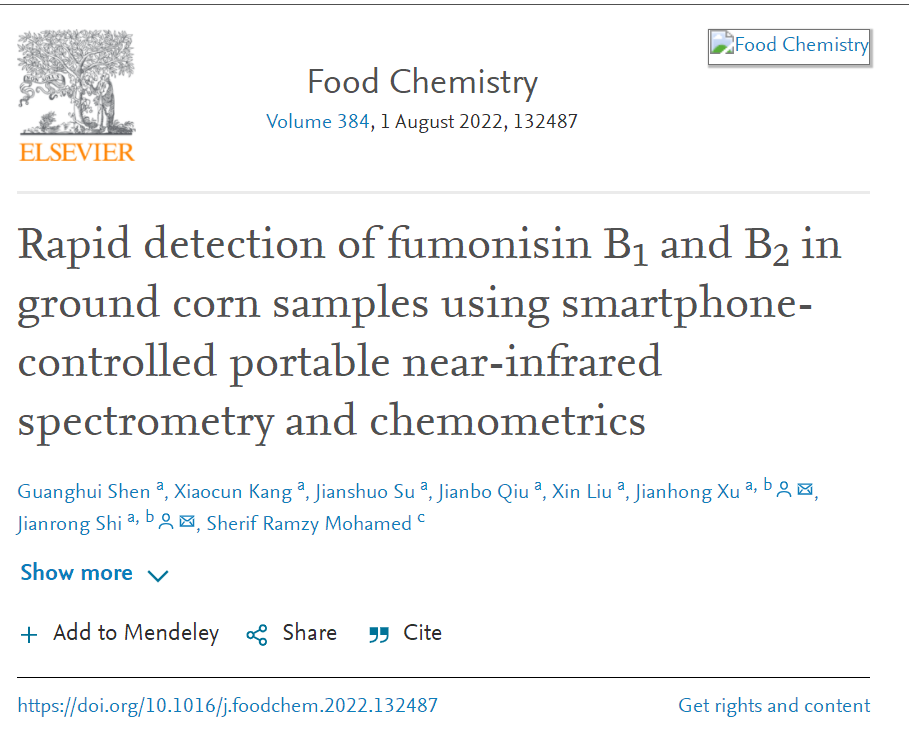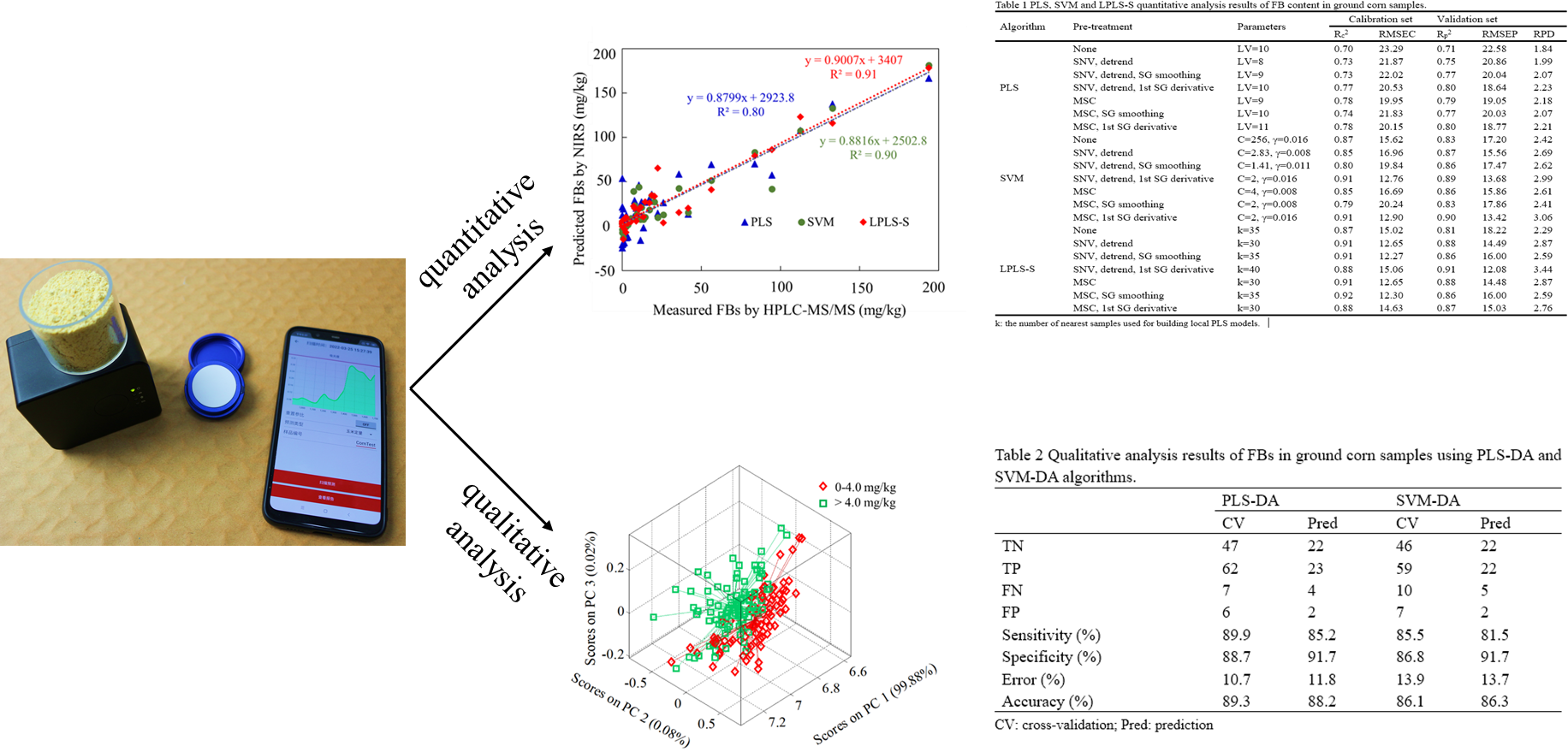
Fumonisins are secondary metabolites produced by the fungi Fusarium verticillioides. Fusarium proliferatum and other related species are commonly found as contaminants in corn and corn byproducts. The fumonisin B (FB) analogues, which include FB1, FB2 and FB3, are the most abundant naturally occurring fumonisins and can cause hemorrhagic-liquefactive brain lesions in horses, pulmonary oedema in pigs, neural tube defects and growth deficiency in children. Furthermore, the FB1 has been classified as a group 2B possible carcinogen for humans by the International Agency for Research on Cancer (IARC).
During the past few decades, various analytical techniques have been established for the detection of FB contamination in cereals, including high performance liquid chromatography (HPLC), thin-layer chromatography (TLC), gas chromatography-mass spectrometry (GC–MS), liquid chromatography-tandem mass spectrometry (LC–MS/MS) and enzyme-linked immunosorbent assay (ELISA). These methods are precise and accurate, but time-consuming, laborious, complicated, and expensive, and are unsuitable for real-time and on-site analysis. In order to deal with this problem, the grain and oil crops safety and nutrition team of JAAS developed a rapid and portable detection method for detecting FB (FB1+FB2) contamination in ground corn samples using a smartphone-controlled portable NIRS system.
A total of 173 corn samples were collected, and their FB contents were determined by HPLC–MS/MS. Partial least squares (PLS), support vector machine (SVM) and local PLS based on global PLS score (LPLS-S) algorithms were employed to construct quantitative models. The performance of the SVM and LPLS-S was better than that of PLS, and the LPLS-S presented the lowest RMSEP (12.08 mg/kg) and the highest RPD (3.44). Partial least squares-discriminant analysis (PLS-DA) and support vector machine-discriminant analysis (SVM-DA) were used to classify corn samples according to the maximum residue limit (MRL) of FBs, and the discriminant accuracy of both the PLS-DA and SVM-DA algorithms was above 86.0%. Thus, the present study provided a rapid method for monitoring FB contamination in corn samples.

The research was supported by the international cooperation platform (International Fusarium Toxin Research Center) and JAAS International Cooperation Fund.
Read more: https://www.sciencedirect.com/science/article/pii/S0308814622004496


